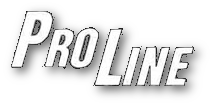 If you operate a nursery or tree farm, you probably–hopefully–are visited by many customers during peak seasons. Like any business, you have to be concerned about safety risks for your customers, however, and how to minimize them. From the sharp edges of landscaping equipment to the endless stretches of hose needed to keep plants thriving, your setting might be brimming with liabilities. You can make your commercial setting safer for both customers and employees by keeping the following tips in mind.
If you operate a nursery or tree farm, you probably–hopefully–are visited by many customers during peak seasons. Like any business, you have to be concerned about safety risks for your customers, however, and how to minimize them. From the sharp edges of landscaping equipment to the endless stretches of hose needed to keep plants thriving, your setting might be brimming with liabilities. You can make your commercial setting safer for both customers and employees by keeping the following tips in mind.
Stow Away Equipment
Even when not in use, commercial landscaping equipment can be hazardous. This equipment necessarily features sharp edges and points that allow it to do its job. Serious injury can result if someone trips and falls onto this equipment or if children, for example, attempt to use it in any way. The best way to ensure that this equipment never becomes a liability is to stow it under lock and key. Of course, some nurseries or tree farms rely on this equipment throughout the day; in those cases, it’s best to make sure an employee is with the equipment at all times. Staff should also block off the area to prevent customers from coming into contact with the equipment when it’s being operated.
Fertilize or Apply Weed Killer after Hours
Keeping open containers of weed killer or fertilizer around the nursery is a certain liability. While you can probably count on adults knowing better than to take a swig of any chemicals you have lying around your grounds, you cannot depend upon them to effectively manage their children at all times. A parent may be so engrossed by your on-sale display of shrubs that they momentarily forget what their kids are up to. If possible, only apply chemicals to your plants before or after hours and be sure that any hazardous materials are safely stored (and labeled) in non-public areas.
Hose Safety
Frequent nursery goers are used to stepping over hoses as they walk from one greenhouse to the next; however, hoses are a major liability nonetheless. Be sure that workers post signs if flooring sections of the nursery are wet after watering plants. Employees should also ensure that the hoses they use are flat to the ground and don’t loop upward where they can become a trip and fall hazard. If the hose isn’t in use, it’s best to remove it from the public area.
In addition, be sure to clear walkways of any moss buildup, which can lead to a slick surface, and post signs alerting people of plants or shrubs with thorny foliage. By training all staff to respect these important measures, you can enhance the safety of your setting. When you take care to shore up these liabilities, you can make your business a safer place for everyone.

